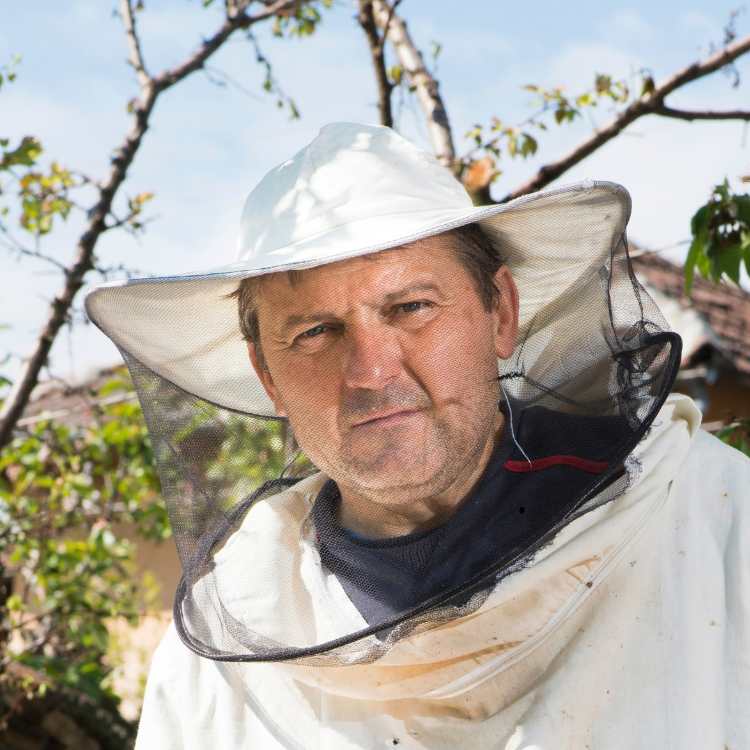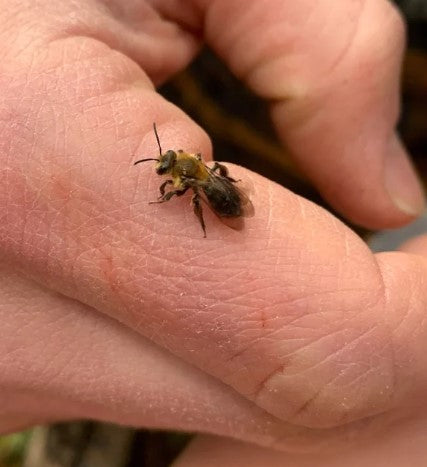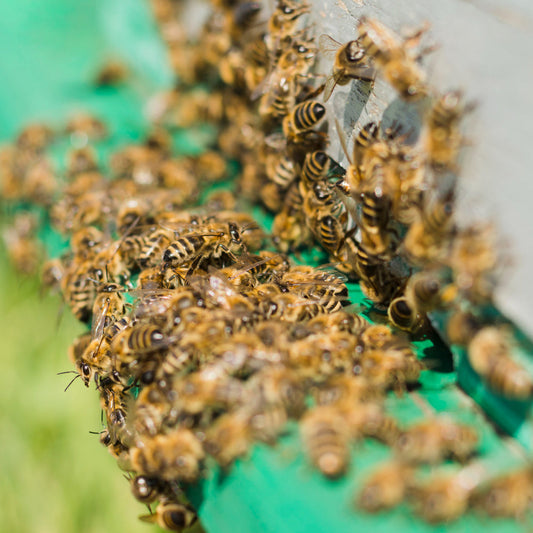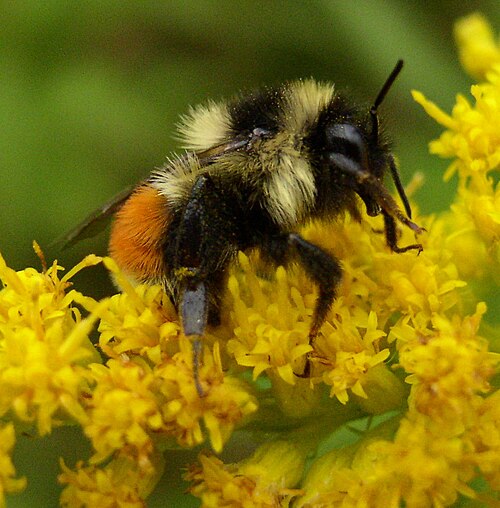Often celebrated for its industrious nature, the humble honeybee owes much of its success to a set of unassuming yet extraordinary tools: its wings. These delicate, translucent structures play a crucial role not only in the bee’s survival but also in the overall success of the hive. From foraging to maintaining hive temperature, honey bee wings are pivotal in every aspect of colony life. Let’s explore the many ways these appendages contribute to the thriving world of honey bees.
The anatomy of a honey bee wing
Whenever you see a macro shot of a pair of honeybee wings, you will find that it has two distinct pairs of wings- the forewings and the hindwings. These wings are thin yet incredibly strong, constructed from a network of veins that provide structural support. When the bee is in flight, the forewings and hindwings hook together to act as a single unit, generating lift and propulsion.
The lightweight and robust design of the honey bee wings allows these furry bugs to perform some very astonishing feats and despite their small size, honey bees are able to travel up to 5 miles in search of nectar and pollen. The wings also help to maintain an average flight speed of around 15 miles per hour. This is really a remarkable efficiency that enables bees to forage more effectively and return with their vital cargo.

An illustration of a honey bee
The use of honey bee wings for foraging
There is no denying the fact that the primary role of a honeybee’s wings revolves around foraging. Consider the wings to be at the heart of this mission. Worker bees in the colony have to rely on their wings to cover vast distances from their hives to scout flowers that are rich in pollen and nectar. A cornerstone to the success of the hive since this ensures a steady supply of food for the colony,
With a worker locating a food source, it quickly comes back to the hive to communicate the location of the food source to the other workers, who then use their own wings to make the same journey to that food source. In this way, the wings are not just to facilitate individual foraging but also help to coordinate collective efforts that help to sustain the entire colony.
Thermoregulation
The honey bees also use their wings to maintain the internal temperature of the hive. This is a very crucial role since the hive needs to be kept between a very narrow temperature range between 90 and 95 degrees Fahrenheit. This is important because this is the ideal temperature range for brood development. During the warmer month, the bees use their wings to ventilate their hive by placing themselves near the entrance of the hive and rapidly beating their wings. This creates an airflow to cool the interior. Similarly, during the colder months, honey bees cluster together to conserve heat. They try to minimize wing activity to reduce any energy expenditure. This amazing ability to modulate wing use highlights the true adaptability of honeybees and how their wings contribute to the hove’s year-round functionality.
Defense
The first defense mechanism to come to mind when we think about honeybees is their stingers. But their wings also serve as an important line of defense. When the hive comes under potential threat, worker bees use their wings to produce a loud buzzing noise which acts as an auditory warning for predators. Plus, this also helps to alert other members of the colony to the impending danger.
Also, their wings give bees their agility and speed which allows them to maneuver quickly during defensive situations. Whether it is escaping from a predator or deterring hive intruders, honeybee wings help to protect their home with remarkable efficiency.

Bees rushing out to protect their colony
The role of honeybee wings in swarming
Swarming is a natural process in which a colony splits to form a new hive. During this event, thousands of bees, including a queen, take to the air to find a new home. The success of the swarm heavily depends on the wings of each participating bee. Strong, coordinated flight ensures that the entire swarm can travel together, locate a suitable new home, and establish a thriving colony. This phenomenon demonstrates the collective strength of honeybee wings and highlights the importance not just for individual survival but also for the perpetuation of the species.
Parting words
Honey bee wings, though small and fragile, play an outsized role in the success of their colonies. Wings enable these little creatures to gather food, regulate hive conditions, and defend against threats. Without these, their wonderful worlds will simply cease to exist. As we marvel at the industrious nature of these bugs, let us also recognize the heroism of their wings. By appreciating their vital contributions and taking steps to protect them, we can ensure that honey bees- and their hives- continue to thrive for generations to come.





